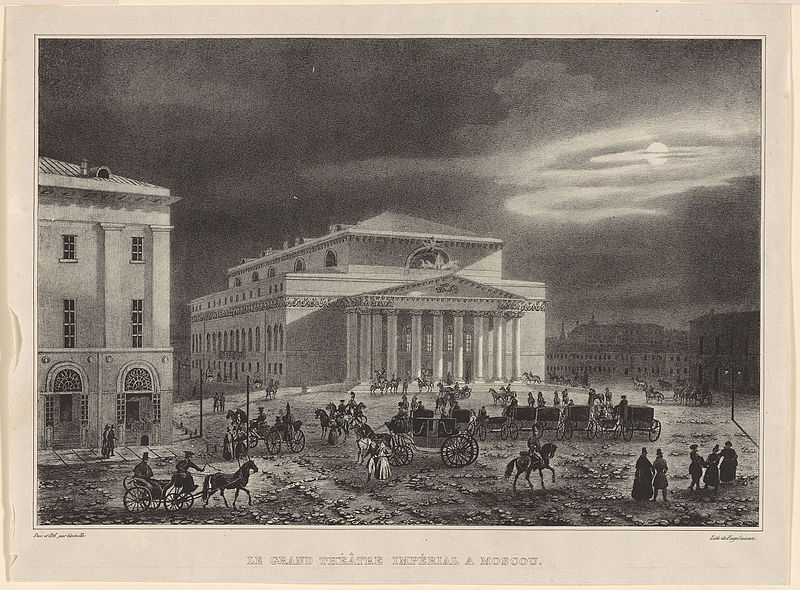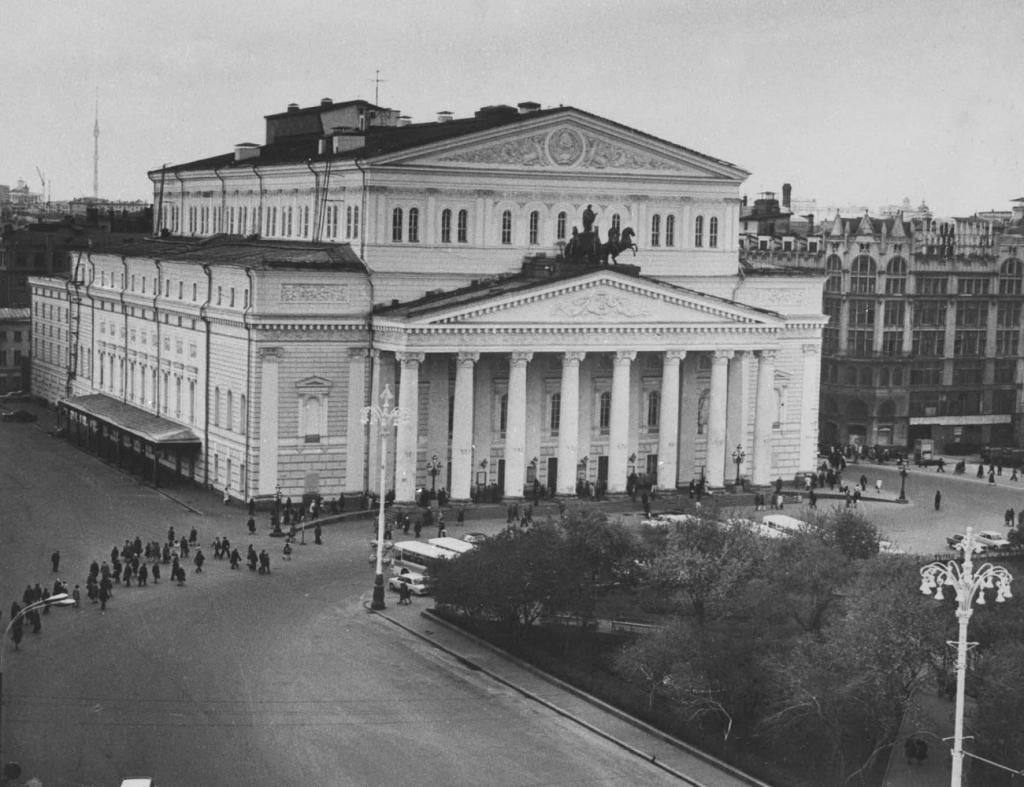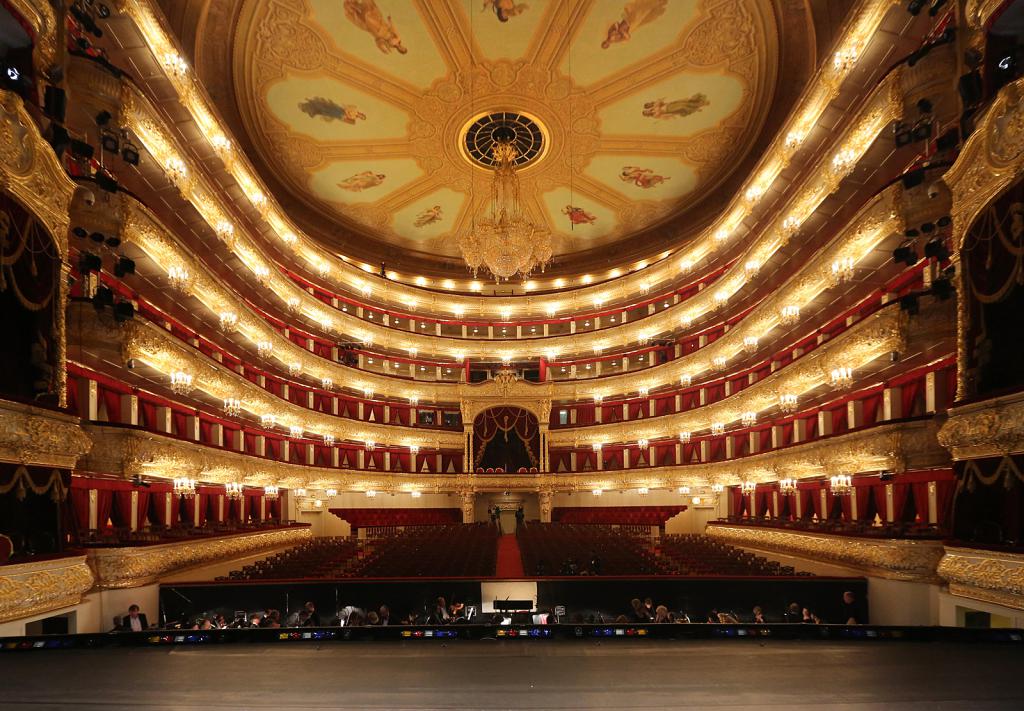Along with the State Tretyakov Gallery, the State Historical Museum, the Cathedral of Christ the Savior, the Moscow Kremlin, the Bolshoi Theater is an object of cultural heritage and one of the outstanding attractions of the city of Moscow. The history of the creation of the Bolshoi Theater saw both light and dark periods, periods of prosperity and decline. Since its foundation in 1776, the theater has undergone numerous restorations: fires were merciless to the house of art.
Beginning of becoming. Theater of Meddox
The starting point in the history of the formation of the theater is considered to be 1776, when Empress Catherine II allowed Prince P.V. Urusov to engage in the maintenance and development of theatrical performances. A small theater was built on Petrovka Street, named after Petrovsky Street. However, it was destroyed by fire even before its official opening.
P.V. Urusov transfers the ownership of the theater to his friend, an entrepreneur from England - Michael Meddox. Half a year of construction, led by the architect of the Bolshoi Theater Christian Rosberg and 130 thousand silver rubles, allowed by 1780 to create a theater with a capacity of a thousand people. Between 1780 and 1794, more than 400 performances were staged. In 1805, the Meddox Theater burned down, and the acting troupe until 1808 was forced to give performances in private theaters. From 1808 to 1812, a wooden theater designed by K.I. Rossi was located on Arbat Square. It burned down during World War II, in a Moscow fire.
The period from 1812 to 1853
After the fire of 1812, the Moscow authorities returned to the question of restoring the theater only in 1816. The most prominent architects of that time took part in the organized competition, among which A. A. Mikhailov became the winner. However, his project turned out to be quite expensive, so the case was delegated to O. I. Bove, a specialist who was a member of the Moscow Construction Commission. The architect of the Bolshoi Theater Beauvais took Mikhailov’s plan as a basis, modifying it a little. The estimated height of the theater was reduced by 4 meters to a level of 37 meters, the interior decoration was also revised.

The project was approved by the authorities in 1821, and after 4 years on the stage of the theater was solemnly presented the work "Creativity of muses", which tells about the revival of the Bolshoi Theater from the ashes. In the period from 1825 to 1853, the posters of the Bolshoi Theater invited connoisseurs of high art to comedy plays - vaudevilles (Village Philosopher, Caliph Fun). Especially at that time opera was popular: works by A. N. Verstovsky (Pan Tvardovsky, Askold's Grave), M. I. Glinka (famous operas Life for the Tsar, Ruslan and Lyudmila), as well as works of Mozart, Beethoven, Rossini. In 1853, the theater was again engulfed in flames and almost completely burnt out.
Reconstructions of the second half of the 20th century
The building of the Bolshoi Theater after the fire of 1853 was severely damaged. The competition for its reconstruction was won by Albert Katerinovich Kavos, an outstanding architect, who was in charge of the Imperial Theaters. He increased the building in height and breadth, reworked the interior and exterior decoration, diluting the classical architectural style with elements of early eclecticism. The sculpture of Apollo above the entrance to the theater was replaced by a bronze quadriga (chariot) created by Peter Klodt. At the moment, neoclassicism is considered the architectural style of the Bolshoi Theater in Moscow.
In 1890 the theater building was again in need of repair: it turned out that its foundation was on barely held wooden piles. The theater also urgently needed electrification. According to the project of the Bolshoi Theater architects - I. I. Rerberg and K.V. Tersky, half-rotten wooden piles were replaced by new ones by 1898. This temporarily slowed down the building.
The Bolshoi Theater in the Soviet period
From 1919 to 1922, disputes were held in Moscow about the possibility of closing the Bolshoi Theater. This, however, did not happen. In 1921, a large-scale inspection of the structures and the entire theater building was carried out. She identified major problems at one of the walls of the auditorium. In the same year, restoration work began under the direction of the architect of the Bolshoi Theater of that time - I. I. Rerberg. The foundation of the building was strengthened, which allowed to stop its upset.

During the Great Patriotic War, from 1941 to 1943, the building of the Bolshoi Theater was empty and was closed with a protective disguise. The entire acting troupe was transferred to Kuibyshev (modern Samara), where a residential building located on Nekrasovskaya Street was allocated for the theater. After the war, reconstruction was carried out in the theater building in Moscow: the interior was replenished with a luxurious and extremely expensive curtain made of brocade. For a long time he served as the main highlight of the historical scene.
Reconstruction of the 2000s
The beginning of the 2000s was marked by a historic event for the Bolshoi Theater: a new stage appeared in the building, created with the latest technology, with comfortable seats and thoughtful acoustics. The whole repertoire of the Bolshoi Theater was put on it. The new scene began to work in 2002, its opening was accompanied by the opera The Snow Maiden by N. A. Rimsky-Korsakov.

In 2005, a grandiose reconstruction of the Historic Scene began, which lasted until 2011, despite initial calculations to finish work back in 2008. The last performance on the Historical Stage before its closure was the opera of M. P. Mussorgsky “Boris Godunov”. During the restoration, the technicians managed to computerize all the processes in the theater building, and the restoration of the interior decoration required about 5 kg of gold and the painstaking work of hundreds of the best restorers of Russia. However, the main features and characteristics of the external and internal decoration by the architects of the Bolshoi Theater were preserved. The area of the building was doubled, which amounted to 80 thousand m 2 .
New stage of the Bolshoi Theater
In 2002, on November 29, after 7 years of construction, the New Stage was inaugurated. It is less luxurious and pompous than the Historical scene, but it still puts on most of the repertoire. Excerpts from various ballets and operas can be seen on the posters of the Bolshoi Theater inviting viewers to the New Stage. Especially popular are the ballet performances of D. Shostakovich: “The Bright Stream” and “Bolt”. The opera performances are represented by the works of P. Tchaikovsky (Eugene Onegin, Queen of Spades) and N. Rimsky-Korsakov (The Golden Cockerel, Snow Maiden). The price of tickets for the New Stage, unlike the Historical, is usually lower - from 750 to 4000 rubles.
The historical scene of the Bolshoi Theater
The historical scene is rightfully considered the pride of the Bolshoi Theater. The auditorium, which includes 5 tiers, accommodates about 2100 people. The stage area is about 360 m 2 . The most famous opera and ballet productions are held on the Historical Stage: Boris Godunov, Swan Lake, Don Quixote, Candide and others. However, not everyone can afford to buy a ticket. Typically, the minimum price for a ticket is 4,000 rubles, while the maximum price can reach 35,000 rubles or more.
General conclusion
The Bolshoi Theater in Moscow is the property of one of the main attractions not only of the city, but of the whole of Russia. The history of its formation from 1776 is mottled with bright and sad moments. Strong fires destroyed several predecessors of the Bolshoi Theater. Some historians reckon the history of the theater since 1853, from a theater revived by architect A.K. Kavos. His history also knew of the war: Patriotic, Great Patriotic, but the theater could survive. Therefore, even now connoisseurs of high art can see the best opera and ballet performances on the New and Historical Stage.